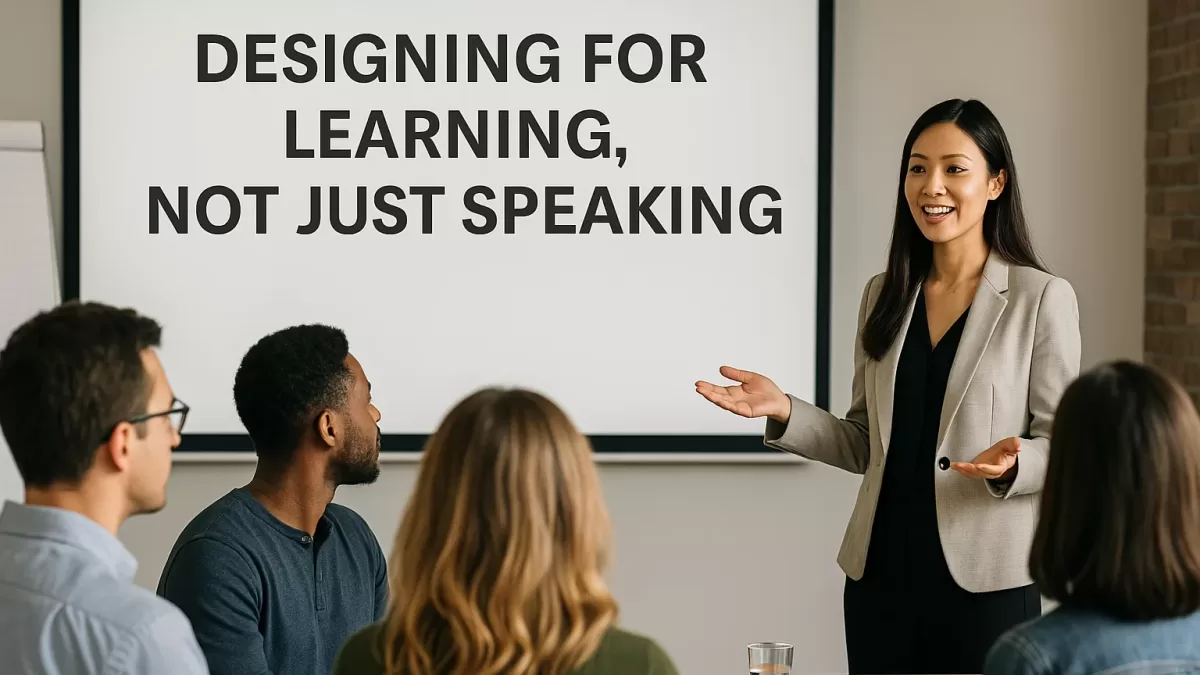In the age of TED Talks, viral keynotes, and snackable content, it’s easy to assume that delivering a powerful talk is all about charisma, storytelling, and a killer closing line. But for corporate leaders, HR teams, and conference organizers, there’s one crucial truth often overlooked:
👉 A talk isn’t great because it sounds good—it’s great because people learn from it.
And learning doesn’t happen by accident.
At Thought Leaders Philippines, we’ve worked with hundreds of organizations that have brought in brilliant speakers—only to feel like something was missing after the applause faded. The speaker was dynamic. The audience was entertained. But nothing really stuck. No shifts in mindset. No fresh behaviors. No business impact.
So what went wrong?
Let’s explore the difference between talking to inform and talking to transform—and why designing for learning makes all the difference.
🎯 The Real Goal: It’s Not Just Inspiration. It’s Impact.
When teams gather for a conference, a town hall, or a company-wide training session, they don’t just want to be impressed—they want to grow. They want ideas that:
- Change how they think
- Make them curious
- Help them solve real problems
- Show them what’s possible in their roles
A “great speaker” who delivers laughs and likes may lift the room momentarily—but a great learning experience changes people long after the event is over.
💡 So… What Makes a Learning-Centered Talk?
Whether it’s a 20-minute keynote or a 2-hour masterclass, high-impact sessions have something in common: they’re designed intentionally for learning. Here’s what that means:
1. Clear Takeaways
The best talks give the audience a few specific things to walk away with—concepts they can apply, questions to reflect on, or frameworks they can use. Clarity beats cleverness every time.
2. Relevance to the Audience
The most effective thought leaders customize their message to the needs of the organization, the culture of the team, and the challenges of the industry. It’s not about generic motivation—it’s about meaningful insight.
3. Cognitive Engagement
Humans learn by doing, not just by listening. Speakers who incorporate moments of reflection, interaction, or even light audience participation create richer learning experiences.
4. Emotion with Purpose
Emotion helps anchor memory—but it should support the learning, not distract from it. Stories are more powerful when they connect to something actionable.
🧠 Learning Design Isn’t Just for Trainers—It’s for Speakers Too
In many cases, the speakers who create the most value are those who see themselves as learning architects, not just message deliverers. They ask:
- What should the audience be able to do, think, or feel differently after this?
- How will I help them connect this insight to their daily reality?
- What’s one behavior this session could influence?
This is especially critical in a Philippine corporate setting, where teams value practical, culturally relevant, and values-aligned content.
💬 When the Talk Ends, What Lingers?
At Thought Leaders Philippines, we encourage clients to reflect on these questions when evaluating their learning events:
- What ideas do you want your people still talking about next week?
- What small shifts in perspective could ripple into performance?
- How will the learning continue after the mic is turned off?
If you start with these in mind, your events won’t just be memorable—they’ll be meaningful.
👥 Final Thoughts: Great Talks Begin with Intentional Design
Whether you’re sourcing a keynote speaker, curating a leadership session, or planning your annual kickoff, remember:
Inspiration opens the door. Design drives the change.
So the next time you bring a speaker on stage, don’t just ask, “Will they wow the crowd?”
Ask instead:
✨ “Will this moment lead to movement?”



